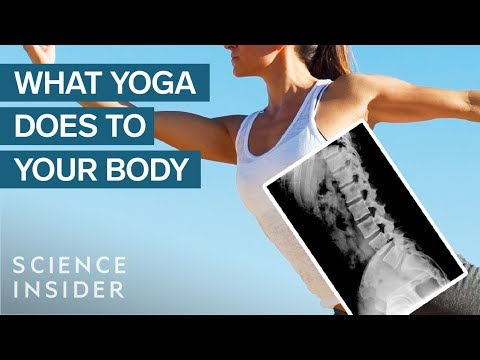Unlocking Your Yoga Journey: Transformative Practices for Mind and Body
Yoga has evolved from ancient spiritual practice into a global phenomenon, touching millions of lives with its promise of physical, mental, and emotional balance. Whether you’re a seasoned practitioner or a curious beginner, understanding how to deepen your yoga journey can lead to transformative results. In this guide, we’ll explore the key elements, historical roots, modern applications, and future implications of yoga, ensuring that you walk away with actionable insights to integrate into your practice.
Introduction
The journey of yoga goes beyond mastering poses. It’s a holistic path that connects mind, body, and spirit. With roots in ancient India, yoga offers tools to achieve inner peace, physical strength, and mental clarity. But how can we truly transform our yoga practice into something more profound and beneficial? In this article, we explore how to advance your yoga practice with evidence-based insights, actionable steps, and a deeper understanding of the discipline.
Key Concepts
Before diving into the history and practical aspects of yoga, it’s essential to understand the foundational concepts that drive its transformative potential.
- Asana: Physical postures that form the backbone of many modern yoga practices.
- Pranayama: Breath control techniques aimed at managing energy within the body.
- Mindfulness: Cultivating present moment awareness to build mental clarity and focus.
- Chakras: Energy centers within the body that, according to yogic tradition, influence physical and emotional well-being.
- Meditation: The practice of quieting the mind to achieve inner calm and spiritual connection.
- Vinyasa: A style of yoga that emphasizes fluid movement between postures, coordinated with breath.
Historical Context
Yoga originated over 5,000 years ago in ancient India, emerging from spiritual traditions such as Hinduism, Jainism, and Buddhism. Early references to yoga practices can be found in sacred texts like the Rigveda, the Upanishads, and later the Bhagavad Gita. Yoga, in its original form, was a deeply spiritual practice, with a focus on meditation and asceticism.
In the late 19th and early 20th centuries, yoga was introduced to the Western world by Indian gurus such as Swami Vivekananda and Tirumalai Krishnamacharya. The practice evolved in the West to focus more on physical postures (asanas) and fitness, while Eastern traditions retained the spiritual and meditative aspects. Today, yoga represents a blend of physical, mental, and spiritual practices that vary significantly in style and purpose.
Current State Analysis
Today, yoga is practiced by millions globally, from high-end studios in New York City to remote villages in India. Its popularity has given rise to multiple variations, including Hatha, Vinyasa, Bikram, and Ashtanga yoga, each offering unique benefits. However, the commodification of yoga in the West has sparked debates about its true purpose and whether modern yoga can still foster deep transformation.
While contemporary yoga classes often focus on fitness and flexibility, there is a growing movement that seeks to return to yoga’s meditative and spiritual roots. Many teachers emphasize mindfulness and breath control (pranayama) as essential components of practice, shifting the focus from merely achieving physical prowess to cultivating mental clarity and emotional balance.
Practical Applications
To truly transform your yoga practice, it’s important to integrate both physical and mental disciplines. Below are key strategies to deepen your yoga experience:
- Commit to Daily Practice: Consistency is crucial. Even 10 minutes of daily practice can yield noticeable changes over time.
- Focus on Breathwork: Incorporating pranayama techniques can elevate your practice from a purely physical experience to one that promotes mental clarity and emotional regulation.
- Embrace Meditation: Set aside time after asana practice for meditation, allowing your body and mind to fully absorb the benefits of yoga.
- Experiment with Different Styles: Trying different types of yoga can provide new perspectives. For example, Hatha focuses on alignment, while Vinyasa promotes fluid movement, and Yin yoga emphasizes deep stretches and relaxation.
Case Studies
To demonstrate the transformative potential of yoga, let’s examine several case studies of individuals who have used yoga to enhance their well-being.
| Individual | Initial Challenge | Yoga Practice | Outcome |
|---|---|---|---|
| Anna (38, New York) | Chronic anxiety | Daily Vinyasa flow and pranayama | Improved emotional balance, reduced anxiety symptoms |
| Raj (45, India) | High blood pressure | Hatha yoga and meditation | Lowered blood pressure, enhanced overall health |
| Emily (26, Australia) | Physical inflexibility | Ashtanga yoga, progressive poses | Increased flexibility, strengthened muscles |
| Michael (30, UK) | Stress from work | Yin yoga with long-held postures | Reduced stress, improved sleep |
| Sarah (50, USA) | Struggling with aging | Gentle Hatha yoga | Renewed sense of vitality and mindfulness |
Stakeholder Analysis
The stakeholders in the world of yoga include practitioners, instructors, health professionals, and the global wellness industry. Each group has unique needs and challenges:
- Practitioners: Seek mental, physical, and spiritual benefits from yoga.
- Instructors: Aim to teach correct alignment, safe practice, and the deeper aspects of yoga, often facing challenges in balancing traditional teachings with modern demands.
- Health Professionals: Use yoga as a complementary therapy for conditions like anxiety, depression, chronic pain, and high blood pressure.
- Wellness Industry: Continually expands yoga-related products and services, ranging from yoga mats to retreats and teacher training programs.
Implementation Guidelines
Here’s how you can start implementing the transformational power of yoga in your daily life:
- Create a Dedicated Space: Set up a space in your home that is quiet, clean, and free of distractions for your yoga practice.
- Set Goals: Whether it’s to improve flexibility, reduce stress, or achieve better focus, having clear goals will keep you motivated.
- Start Small: Begin with shorter sessions if you’re a beginner and gradually build up your practice.
- Track Your Progress: Keep a yoga journal to monitor your physical, mental, and emotional growth.
- Find a Teacher or Online Class: Guidance from an experienced instructor can help you avoid injury and deepen your practice.
Ethical Considerations
The commercialization of yoga has raised important ethical questions, such as the cultural appropriation of traditional practices and the focus on physical appearance over spiritual growth. Yoga teachers and practitioners should strive to respect its origins and foster inclusivity in their practice, ensuring that yoga remains a path of self-discovery, healing, and personal growth.
Limitations and Future Research
While yoga offers numerous benefits, its limitations should also be acknowledged. Certain advanced postures may not be accessible to everyone, particularly those with physical injuries or chronic pain. Furthermore, more research is needed to understand how different styles of yoga affect mental health and how yoga can be tailored to suit diverse populations.
Future research could explore yoga’s role in treating trauma, its effects on the nervous system, and how technology (such as virtual yoga classes) can improve accessibility. Additionally, the long-term effects of regular yoga practice on aging, chronic disease management, and emotional well-being warrant further investigation.
Expert Commentary
Yoga is not merely a form of exercise, but a lifelong journey that cultivates strength, flexibility, and resilience. It bridges the gap between the physical and the metaphysical, offering practitioners tools to navigate life’s challenges. The integration of mindfulness, breathwork, and movement has proven beneficial in countless studies, supporting yoga’s role as a








